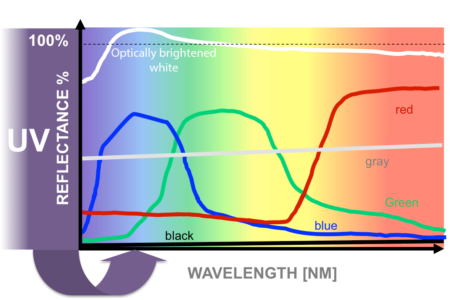Two years ago, I don’t think anyone could have totally predicted the impact the pandemic would have on commerce in general and printing in particular. From paper mills shutting down to products stuck on ships in the ocean, supplies are getting tight. This is no more apparent than in the paper industry. Getting the paper you need when you need it has become a daily challenge for all printers, and IWCO Direct is no exception. We recently had a large form run on 60lb. offset stock that ended up printing on three different papers due to lack of supply. And of course, everything had to look the same.
Our Color Technical Support (CTS) department is in charge of all paper calibrations for our inkjet presses. We have really been kept on our toes recently, from setting up papers on our new presses to calibrating substitute stocks for current production, sometimes with little or no notice.
IWCO Direct has a very thorough testing and setup process for papers. That being said, we have at times been given a paper stock where “rejection” is not an option or there is literally no time to go through our full process. We have all needed to adapt during the pandemic, and here are some things to consider when presented with situations like this.
WARNING: This is going to get nerdy. If you need further insight on this subject, contact me directly or the wonderful people at Inkjet Insight can help you as well.
Checking Paper White Point and OBA
One of the first things you can do is check the new stocks’ white point and check for the presence of Optical Brightening Agents (OBAs). The best way to do this is with some kind of spectrophotometer (i1 Pro, eXact, Techkno, etc.). Take a reading of the papers and look at the LAB values, especially the b* value. If the new paper’s white point differs a lot from most of your other stocks, you will probably need to allocate more time to get the new stock dialed into a good match with your old stock.
Same with OBAs. If you can look at the spectral curve (I’m really geeking out here) and see something like this:

Image from X-Rite
That bump in blue on the left shows the presence of OBAs. If the OBA content in the paper is a lot higher or lower than your current stock, again you may need some extra time to dial things in.
Checking Solid Ink Densities
Another step we will take when we get a paper on press is to run some targets (P2P, TC1617) and look at the solid ink densities to see how they compare with other stock of the same type (coated, uncoated, etc.). This is of course assuming you know what densities you are usually getting. (You should. Ask for help if you don’t.) If the densities are all in range or higher, you are probably good to move on with your testing and setup. If one or more of the densities is significantly lower (5-6 points or greater) than your usual densities, you will need to give that paper some more thought. We had a paper recently where the black solid density was 10 points lower than usual. We were able to make it work as a standalone/one-time paper, but it would not have worked well as a substitute for one of our regular stocks.
Using G7® Wherever Possible
Ascending my soapbox
I understand that G7 has gotten a bad rep at times (sometimes well deserved). This is never more evident than in digital calibration. Regardless of your thoughts on the politics of G7, the method of G7 is the best way I have found in my 22 years of color management to get two or more printers or stocks to match each other. I have said this before and will say it again, I don’t do G7 for a certificate, I do it because it works. If used at the calibration level, it can truly help to make sometimes very different papers have an excellent shared appearance. It has allowed us to have 10 different paper stocks all run through one output profile.
Descending soapbox
Dangers of Limited/Rushed Testing
There are, of course, dangers to rushing through testing. We had a case recently where one of our toner printers went down and we had to move the job to inkjet. We were under the gun, and it was a small run, so we didn’t complete our full process. CTS found out later that they had scuffing issues down the line in bindery. If we have to run that job again on that equipment, we will need to spend more time testing downstream. Whenever possible, test as much of the process, including the downstream process, as you can.
The Biggest Help of All
In my mind, the best thing that you can do in these difficult times is to already have a well-documented plan in place. Know what you need to do and how you are going to do it. Know what you are going to check and why. Know what your deal breakers are ahead of time. Through preparation and practice, CTS is able to usually setup a new paper on any of our devices in two hours or so, making the scrambling less stressful. The less you “wing it,” the more successful you will be.
Summary
While we can’t control the paper market; we can control our processes and planning. I hope that some of these tips (as nerdy as they are) can help you with your own process. Feel free to reach out with any questions.

